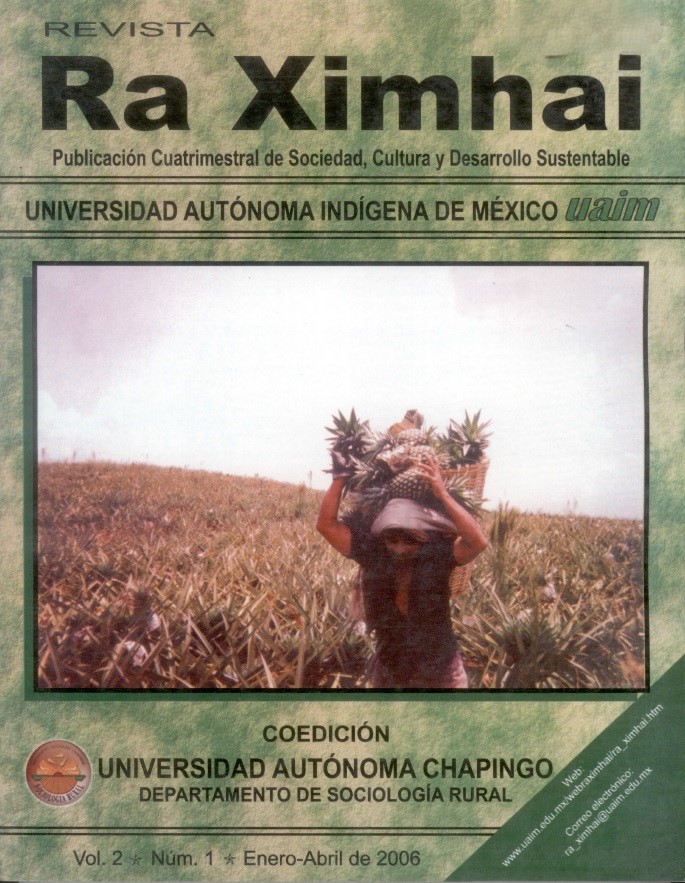Interculturality: an essential aspect for proper relations between different cultures. The case between “Yoris” and “Yoremes” of the Ceremonial Center of San Jerónimo de Mochicahui, El Fuerte, Sinaloa, Mexico
DOI:
https://doi.org/10.35197/rx.02.01.2006.04.mbKeywords:
interculturality, yoreme, yori, MochicahuiAbstract
Interculturality is a necessary necessity when two or more groups with different cultures meet, whether in a hostile or friendly manner. It is necessary to know the “others” in order to understand and comprehend many aspects or cultural elements that at first glance may seem negative, immoral or simply should not be present. It is precisely in this problematic context where a dialogue is required that allows for understanding and harmonious coexistence where ethnocentrism, prejudice and discrimination do not fit. Unfortunately, it is difficult to achieve adequate intercultural relations and this is demonstrated in this work when addressing this theory to the case of “Yoris” and “Yoremes” from the region of Mochicahui, El Fuerte, Sinaloa.
Downloads
References
Austin, M. R. 1994. Comunicación Intercultural. Fundamentos y Sugerencias. (En Línea). Disponible en http://www.geocities.com/tomaustin_cl/com/ComIntercult.htm.
Betancourt, H.; S. R. López. 1993. The Study of Culture, Ethnicity and Race in American Psychology. In: American Psychologist.
Bonfil, B. G. 1989. La teoría del control cultural en el estudio de procesos étnicos. En Arisana No. 10.
Bonfil B., G., 1994. México Profundo, una civilización negada. Ed. Grijalbo, México, 250 pp.
Cámara, B. F. 1997. Identidad y etnicidad indígena histórica, en José Alcina Franch (compilador), Indianismo e indigenismo. In América, Alianza.
Conadi, F. 1996. In: Molina Chávez, W. La Educación Intercultural Bilingüe en la Región de Magallanes: una reflexión desde el Trabajo Social. (En Línea).
Disponible en http:/www.ubiobio.cl/cps/ponencia/doc/p5.3htm.
Eco, U. 1985. ¿El público perjudica a la televisión?”. In: Sociología de la comunicación de masas, II. Estructura funciones y efectos. Gustavo Gili, Barcelona.
Florescano E. 1996. Los indígenas, el Estado y la Nación. In: Proceso. No. 1049, México, 08 de diciembre.
Giddens, A. 1993. Sociología. Alianza Universitaria.In: Ethnic and Racial Studies, Vol. 19. Israel, E. 1995. Comunicación intercultural: construcción periodística de la diferencia.
In: Análisis.
Kottak, C. 1997. Antropología Cultural, Espejo para la Humanidad. Mc Graw-Hill.
Lamo de E., E. 1995. Fronteras culturales en Culturas, Estado, Ciudadanos. Una aproximación al multiculturalismo en Europa. Alianza Editorial, Madrid.
Molina, C. W. La Educación Intercultural Bilingüe en la región de Magallanes: una reflexión desde el Trabajo Social. (En línea). Disponible en http://www.ubiobio.cl/cps/ponencia/doc/p5.3htm.
Ochoa, Z. J. Á. 1997. Los Mayos. Ed. El Correo, Mexicali, B.C., 348 pp.
Páramo, R. T. 2000. Methodological Design. Capítulo V de su tesis doctoral. Inédito. Rodrigo, A. M., (a). Elementos para una comunicación Intercultural. (En Línea).
Disponible en http://www.cidob.org/Castellano/Publicaciones/Afers/rodrigo.html.
Rodrigo A. M., (b). Los estudios de comunicación intercultural. (En Línea). Disponible en http://www.ehu.es/zer/zer/1/4notinvrodr.htm.
Rodrigo A. M., (c). La comunicación intercultural. (En Línea) Disponible en http://www.blues.uab.es/incom/2004/cas/rodcas.html.
Sartre, J. P. 1971. Flaubert l´idiot de la familla. París, Gallimard.
Vertovec, S. 1996. Multiculturalism, Culturalism and Public Incorporation.
Weber, E. 1985. Líneas transversales de los debates (identidad, cultura, religión, islamismo, modernidad, mundialización, interculturalidad y negociación). In: CIDOB d´Afers Internacionals, no. 36.
Downloads
Published
How to Cite
Issue
Section
License
Copyright (c) 2006 Marco Antonio Borboa Trasviña

This work is licensed under a Creative Commons Attribution-NonCommercial 4.0 International License.
Usted es libre de:
- Compartir — copiar y redistribuir el material en cualquier medio o formato
- Adaptar — remezclar, transformar y construir a partir del material
- La licenciante no puede revocar estas libertades en tanto usted siga los términos de la licencia
Bajo los siguientes términos:
- Atribución — Usted debe dar crédito de manera adecuada , brindar un enlace a la licencia, e indicar si se han realizado cambios . Puede hacerlo en cualquier forma razonable, pero no de forma tal que sugiera que usted o su uso tienen el apoyo de la licenciante.
- NoComercial — Usted no puede hacer uso del material con propósitos comerciales .
- No hay restricciones adicionales — No puede aplicar términos legales ni medidas tecnológicas que restrinjan legalmente a otras a hacer cualquier uso permitido por la licencia.








